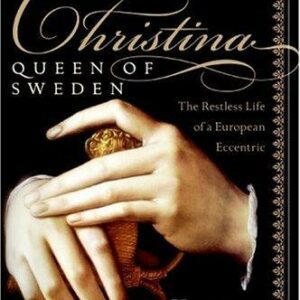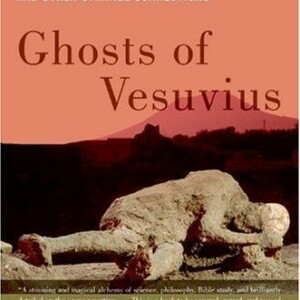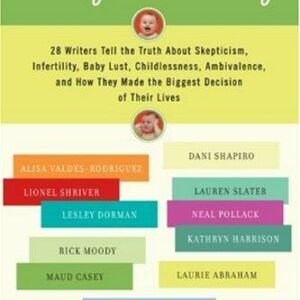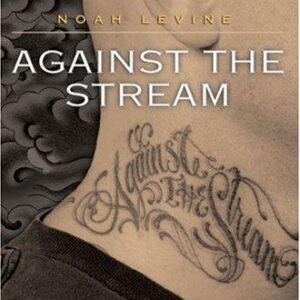A Treacherous Curse
$17.00
| Title | Range | Discount |
|---|---|---|
| Trade Discount | 5 + | 25% |
- Description
- Additional information
Description
Members of an Egyptian expedition fall victim to an ancient mummy’s curse in this thrilling Veronica Speedwell novel from the New York Times bestselling author of the Lady Julia Grey mysteries.
London, 1888. As colorful and unfettered as the butterflies she collects, Victorian adventuress Veronica Speedwell can’t resist the allure of an exotic mystery—particularly one involving her enigmatic colleague, Stoker. His former expedition partner has vanished from an archaeological dig with a priceless diadem unearthed from the newly discovered tomb of an Egyptian princess. This disappearance is just the latest in a string of unfortunate events that have plagued the controversial expedition, and rumors abound that the curse of the vengeful princess has been unleashed as the shadowy figure of Anubis himself stalks the streets of London.
But the perils of an ancient curse are not the only challenges Veronica must face as sordid details and malevolent enemies emerge from Stoker’s past. Caught in a tangle of conspiracies and threats—and thrust into the public eye by an enterprising new foe—Veronica must separate facts from fantasy to unravel a web of duplicity that threatens to cost Stoker everything…“A ruthlessly intelligent heroine.”—NPR
Praise for A TREACHEROUS CURSE
“While readers of Elizabeth Peters’s ‘Amelia Peabody’ mysteries will enjoy this title, it is fans of Jane Eyre who will truly appreciate the third volume in Rabyourn’s historical series (following A PERILOUS UNDERTAKING). Her intricately plotted and dramatic story features a strong-willed, independent woman who is the intellectual equal of the brooding Stoker.”—Library Journal (Starred review)
“As always, Raybourn writes with verve and wit….A Victorian Phryne Fisher, Veronica is an irresistible, modern, engaging woman who uses scientific observation and natural charm to guide her investigations.”—Booklist (Starred review)
“A Treacherous Curse [is] a funny, feminist, historical fiction mystery series that I love….If you haven’t started this series yet now’s a perfect time to get caught up!”—Book Riot
“[E]xhilarating third mystery featuring Veronica Speedwell and her colleague, Revelstoke “Stoker” Templeton-Vane….In audacious, decidedly un-Victorian Veronica, Raybourn has created a delightful cross between real-life reporter Nellie Bly and Phryne Fisher.”—Publishers Weekly
Praise for the Veronica Speedwell Mysteries
“I love this series! Veronica Speedwell is utterly unique–a lady with an intriguing past and some rare kick-ass skills–definitely not your standard historical mystery detective. Her relationship with the brooding and equally mysterious Stoker is fascinating. The plots are clever and fast-paced. I can’t wait for the next adventure.”—Amanda Quick, New York Times bestselling author of The Girl Who Knew Too Much
“Veronica Speedwell is sure to join the greats of mystery fiction.”—Alan Bradley, New York Times bestselling author of the Flavia de Luce series
“Veronica Speedwell might just be one of the most endearing heroines in mysteries, period…[a] woman ahead of her Victorian times. She’s smart, dashing, and entirely capable….Her sense of humor and chemistry with Stoker, her counterpart, just make this series even better.”—Bustle
“Wickedly clever and devilishly amusing.”—Susan Elia MacNeal, New York Times bestselling author of the Maggie Hope series
“I love this book! Brings us the powerful Veronica Speedwell, who triumphs over adversity and danger with wit, charm, and uncanny determination. A real find.”—Robyn Carr, #1 New York Times bestselling author of the Virgin River series
“A smart, plucky, way-ahead-of-her-time heroine….The ending left me looking forward to Veronica’s next exploits.”—Fort Worth Star-Telegram
“A fun heroine who defies convention and embraces intrigue.”—Booklist
“A fine combination of detective story and character study…sure to interest mystery lovers and Anglophiles alike.”—Historical Novels Review
“Full of innuendo and amusing repartee, Deanna Raybourn’s sly wit will be appreciated by readers of romance and historical fiction alike…a fun read, reminiscent of Elizabeth Peters’s novels, whose cross-genre charm is sure to appeal to readers.”—Shelf AwarenessDeanna Raybourn is the author of the award-winning, New York Times bestselling Lady Julia Grey series, currently in development for television, as well as the USA Today bestselling and Edgar Award nominated Veronica Speedwell Mysteries and several standalone works.Chapter
1
London, 1888
I assure you, I am perfectly capable of identifying a phallus when I see one,” Stoker informed me, clipping the words sharply. “And that is no such thing.”
He pointed to the artifact I had just extracted from a packing crate. It was perhaps three feet in length, carved of some sort of exotic hardwood, and buffed to a smooth sheen. Bits of excelsior dangled from it like so much whimsical decoration. It was oddly festive.
“Of course it is,” I said. I brandished the item in question at him. “Just look at the knobby bit on the end.”
Stoker folded his arms over the breadth of his chest and looked down his nose at me.
“Consider, if you will, the length. Improbable, you must admit. Most improbable.” He was doing his best to avoid the appearance of embarrassment, but a touch of rose still bloomed in his cheeks. I found it winsome that such a hardened man of the world could have gained so much experience as scientist, explorer, natural historian, naval surgeon, and taxidermist and still manage a maidenly blush when confronted with a fertility icon.
“Stoker,” I said patiently, “both male and female genitalia have been celebrated in ritualized art since the beginning of time. And frequently their proportions are exaggerated in order to convey their importance to the peoples in question.”
He curled a handsome lip. “Do not invoke ethnography, Veronica. You know how I feel about the social sciences.”
I shrugged. “There are those who maintain the study of culture is just as important as the examination of a bit of bone or a fossilized snail. And do not pretend that you are immune to the seductive siren call of the humanities. I have seen you mooning over journal articles about the role of religious ritual in the decreasing populations of certain South Sea turtles.”
“I do not moon,” he retorted. “And furthermore, those journal entries-“
He proceeded to lecture me for the next quarter of an hour, about what I cannot say, for I turned my attention to the contents of the packing crate. I had long since discovered upon my travels that men are largely the same no matter where one encounters them. And if one is prepared to let them discourse on their pet topics of conversation, one can generally get on with things quite handily without any interference.
The packing crate was the newest arrival at the Belvedere, the budding museum Stoker and I had been commissioned to organize under the aegis of our friend and benefactor, the Earl of Rosemorran. Situated on the grounds of his lordship’s Marylebone estate, Bishop’s Folly, the Belvedere was either a glorious trove of undiscovered treasures or the storehouse of a family of madmen, depending upon one’s perspective. The earls of Rosemorran had been an acquisitive lot, haring around Europe to amass a collection of art, artifacts, zoological specimens, books, manuscripts, jewels, armor, and a thousand other things that defied description. How we came to live amongst such treasures is a story that merits its own volume.
To investigate one murder is a curiosity. To investigate two is a habit. Stoker and I had fallen into the practice of murder when our mutual friend, the Baron von Stauffenbach, had been slain the previous summer. We had uncovered some difficult truths and made a cautious alliance with Sir Hugo Montgomerie, the head of Special Branch, Scotland Yard’s most prestigious division. When, at the end of that investigation, Fate had proven to be an unkind hussy and left us without home or employment, the current Lord Rosemorran had graciously invited Stoker and me to work for him, living on the grounds of Bishop’s Folly and cataloging his collection with an eye to one day opening the Belvedere as a public museum. It was arduous work, consisting of unpacking, inspecting, reviewing provenance, cleaning, and registering each item-the beetles alone could take years-but it was enchanting. Every day offered its own surprises, and as word spread of our undertaking, donations to the collection began to arrive. It seemed that Lord Rosemorran’s project was the perfect opportunity for his friends to rid themselves of items they no longer wanted. They would never send anything truly valuable-the English aristocracy are nothing if not sharply attentive to financial advantage-so we received instead a steady stream of decrepit hunting trophies and wretched oil paintings. They were of no use to us, so Stoker regularly burnt the moth-eaten trophies in the garden whilst I arranged the portraits into a grim sort of family, giving each a pet name and taking particular delight in each baleful new addition.
But the shipment that arrived that morning had been the most peculiar yet. The large packing crate had been stuffed with excelsior to cradle an array of phalluses, each more impressive than the last. Clay, leather, marble, wood-the materials were nearly as varied as the objects themselves, and the assortment of sizes was frankly extraordinary. From a modest little fellow about the width of my handspan to the enormity I brought to Stoker’s attention, they represented a thorough study of that particular piece of anatomy. At the bottom of the crate nestled a leather box with a piece of card affixed to the lid.
Personal gift to Miss Veronica Speedwell. I have not forgot my obligation. With my compliments and heartfelt gratitude. Miles Ramsforth
Suddenly, the mysterious collection made perfect sense. Our second investigation had saved Miles Ramsforth from the hangman’s noose, and I was not surprised he had chosen to repay the debt with part of his extraordinary array of erotic art.
Understandably, Ramsforth had quitted England immediately upon his release from prison and we had never met in person, but he had sent an effusive letter of thanks with a splendid silver watch chain for Stoker and a promise to remember me with something even more noteworthy.
My curiosity piqued, I extracted the box carefully and opened it with a rush of anticipation. I was not disappointed. Wrapped lovingly in cotton wool was yet another phallus, this one a masterpiece of the Venetian glassmaker’s art. Of clear blown glass, it was striped with luscious violet color that gleamed like a boiled sweet as I held it to the light. I remembered it well. I had admired it when Stoker and I first studied the collection, although how Ramsforth happened to know of my appreciation was a mystery. It was a testimony to both his gratitude and his puckish sense of humor that he would present me with the costliest specimen from such a deliciously lurid collection.
I brandished it at Stoker. “I was quite right about the hardwood piece,” I told him. “This was at the bottom of the crate. It is the doing of Miles Ramsforth. A personal gift,” I added with a waggle of my brows.
Stoker blushed furiously. “For the love of God, put that thing away.”
“I cannot imagine why you are so bashful on the subject of the male genitalia of Homo sapiens when you are the only one of us who can boast of owning it,” I muttered as I replaced the offending item carefully into its box with a mental note to examine it more thoroughly in private.
“I heard that,” he said as he returned to the task at hand-hollowing out the remains of a badly mounted platypus. The task was messy but not arduous, so he had kept on his shirt, a rare occurrence given his penchant for working stripped to the waist. I regretted the fact that he was fully clothed, but I contented myself with the occasional appreciative glance at his muscular forearms, bared to the elbow. His shirt was open at the neck, and he seldom wore a waistcoat and never a coat if he could help it. His hair, black and waving and badly in need of a barber’s attentions, was punctuated by a slender streak of silvery white, a souvenir of our most recent foray into detective pursuits. It had ended when he had been shot in the temple in a ridiculous attempt to shield me from a murderer, and the result was a single snowy lock where the bullet had struck him. Gold rings glinted at his earlobes, and one of his many tattoos, relics of his days as a surgeon’s mate in Her Majesty’s Navy, peeped from the edge of his rolled sleeve. He wore a patch over his left eye, a habit since an accident in the Amazon had nearly taken it from him, leaving him with slim pale ribbons of scars that marked him from brow to collarbone and beyond. He looked like precisely what he was: a man in his prime with a good deal of experience and precious little regard for Society’s expectations.
“Stop scrutinizing me as if I were one of your damned butterflies,” he said in a conversational tone.
I sighed. “It has been a year since my last indulgence in physical congress,” I reminded him in a wistful tone. “Admiring your physique is my only consolation.”
He snorted by way of reply. I had made no secret of my perfectly sensible approach to relationships between the sexes-namely that marriage was a ridiculously outmoded institution and that sexual exercise was both health-giving and revivifying to the spirits. In the interest of respectability, I never indulged whilst in England, preferring to satisfy my urges during my trips abroad, a discreet and wholly efficient arrangement. The fact that it had been more than a year since my last expedition had begun to try my resolve. Stoker did not judge my predilections any more than I judged him for living as chastely as any medieval monk. A brief and hellish marriage followed by a period of Bacchanalian overindulgence had soured him on romance, although I regularly recommended to him a restorative bout of coitus, preferably with a strapping dairymaid-a course he had yet to embrace.
I considered the various phalluses, uncertain of where to begin. “Ought I to arrange them by size? Or shall they be grouped according to geographical region of origin? Or material?” I asked. Stoker and I frequently quarreled about various methods of organization within the collection. I preferred a chronological approach whilst he maintained a firm preference for theme.
This time he merely flapped a hand, clearly finished with the subject of phalluses. I hefted the largest, the hardwood piece from the Pacific, scrutinizing it with a practiced eye. “You know, I am rather reminded of a charming American fellow I met in Costa Rica,” I said with a nostalgic sigh. I made a point of never keeping in contact with my paramours once I had finished with them, but I had very nearly made an exception for the American . . .
I did not pursue the conversation. Stoker was in a good mood for once, something that had been sorely lacking of late. February had been thoroughly nasty, with snowfall of apocalyptic proportions and temperatures that would have caused a polar bear to shiver. We had made the best of the situation, applying ourselves diligently to our work, but both of us had suffered bouts of ennui, longing for balmy climes and sea-scented winds. Our planned expedition with Lord Rosemorran to the South Pacific to search for new specimens had been thwarted by accident-namely his lordship’s unfortunate collision with his Gal‡pagos tortoise, Patricia. She lumbered around the estate with all the grace and speed of a boulder, so how the earl managed to fall over her was a matter never fully explained to my satisfaction. But the result had been a broken femur and months of recuperation. We sympathized with his lordship and told him we did not mind in the least, but I drank a significant amount of strong spirits as I unpacked my bag, and I suspected Stoker sniffed back a manful tear or two as he put away his maps and charts.
Saving Miles Ramsforth from the noose had been a diverting occupation, but a Christmas spent with Lord Rosemorran’s unruly brood of children underfoot and the rigors of a perilously long winter had nearly undone us both. Stoker had amused himself by unearthing the most ludicrous of the taxidermy mounts while I had taken to reading sensationalist newspapers. One, The Daily Harbinger, had proven useful during the Ramsforth case, and I had resorted to bribing the hall boy, George, to bring me the copy each morning before his lordship had a chance to read it.
This morning he skipped in, bearing the newspaper and the first post, whistling a merry tune. George broke off as he caught sight of the object in my hand, his eyes round with interest and his errand forgotten.
“Here, now, miss, that looks like-“
“We know what it looks like,” Stoker cut in ruthlessly.
George peered into the packing crate. “Where are these from, miss?”
“All around the world,” I told him. “They were amassed by a gentleman named Miles Ramsforth, a famous patron of the arts and a suspected murderer.”
He blinked. “Imagine that.”
I put out my hand. “Harbinger, please.”
He gave me the newspaper before wandering to where Stoker was bent over his trophy. “That’s a funny old stoat.”
“It isn’t a stoat,” Stoker corrected. “It is a platypus.”
“Why has it got a duck on its face?” George put out a tentative finger and Stoker flicked it aside.
“This is Ornithorhynchus anatinus, the duck-billed platypus, native to Australia.”
“But why has it got a duck on its face?” George persisted.
“It hasn’t got a duck on its face. That is just its face.”
“Are you taking the duck off its face?”
Stoker’s nostrils flared slightly and I knew he was about to say something unpleasant.
“George,” I called as I skimmed the front page of the newspaper. “What is the latest news of the Tiverton Expedition?”
George trotted over, his face bright with interest. He had a penchant for the most outrageous stories in the Harbinger-and the Harbinger’s stories were already more outrageous than most. But he was a good lad and took great pride in his budding literacy, so I encouraged him.
“Oh, miss, you ought to read it. They say the expedition is cursed,” he said with an unholy gleam in his eye.
From behind his platypus, Stoker gave a snort.
“You don’t believe in curses, sir?” the boy asked.
Stoker opened his mouth-no doubt to hold forth on the subject of superstition-but I anticipated him. “Curses are not rational, George. There is no scientific basis for them. However, there is good reason to think that the belief itself in a curse can create deleterious effects.”
“Dele-what?” the boy asked.
“Deleterious. It means bad. I was saying that the mere belief in a curse can give it power.”US
Additional information
| Weight | 10.8 oz |
|---|---|
| Dimensions | 0.8000 × 5.5000 × 8.2200 in |
| Imprint | |
| ISBN-13 | |
| Author | |
| Audience | |
| BISAC | |
| Subjects | victorian mystery, Egyptian, women sleuths, romance novels, historical mysteries, historical mystery books, british mysteries, veronica speedwell series, Victorian era, FIC027170, deanna raybourn books, british detective mysteries, Veronica Speedwell, Stoker, Lady Julia Grey, a curious beginning, a perilous undertaking, deanna raybourn, Detectives, london, historical, romance, love, detective, mystery, murder, heist, england, FIC022040, historical fiction, victorian, egypt, mummy, historical romance, action adventure books, historical mystery |
| Format |











